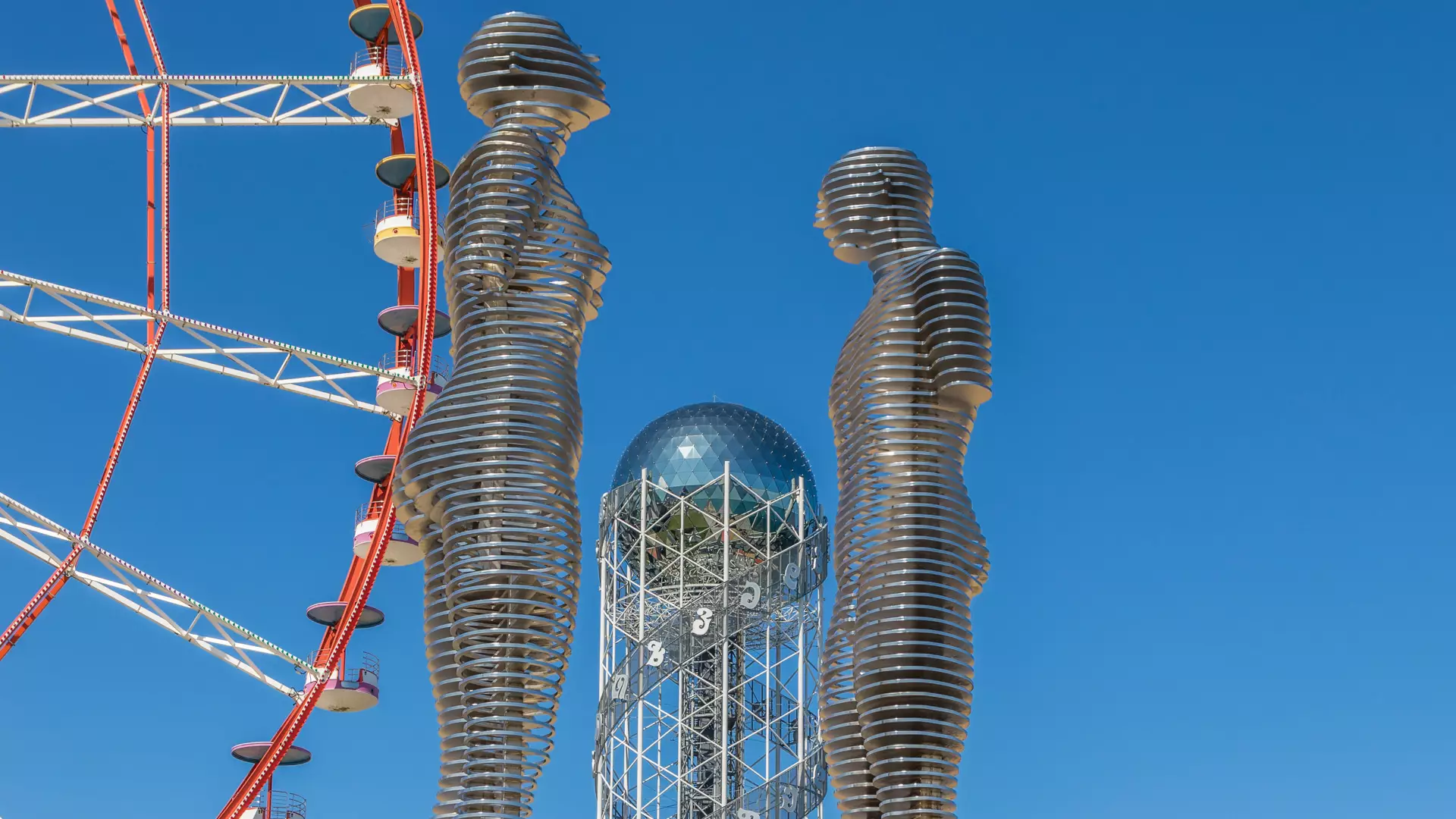Ali & Nino Statue
The Legend of Ali and Nino
This circular motion expresses eternal love and people come to Batumi from all over to see it. At least, that was the intention of the sculpture’s creator, the Georgian artist, and sculptor, Tamar Kvesitadze. Her inspiration for the creation of the sculpture was the story by Kurban Said, author of the worldwide best-seller, Ali and Nino, published in 1937. In the story, Ali Shirvanshir is an Azerbaijani aristocrat and Nino Kipiani is the daughter of a Georgian prince. Some say that the story is true, but the majority believe that the story of Ali and Nino is a legend, the fruit of Kurban Said’s imagination.
Ali and Nino’s story is also called the Caucasian Romeo and Juliet, because, while the time may be different, the tragedy is the same.
When the figures of Ali and Nino, made from thin sheets of metal, separate from each other, it becomes clear that the individual parts of a whole can never be perfect on their own. Tamar Kvesitadze’s composition is not just a symbol of eternal love, but also of the peaceful co-existence of different cultures.
Cookie Policy

